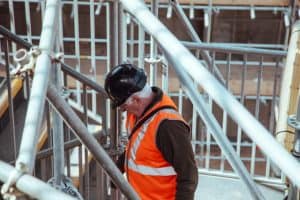
Workplace safety is paramount, especially in the construction industry. With heavy machinery, high elevations, and dangerous equipment, construction sites are inherently risky. Unfortunately, accidents happen despite strict safety measures. When they do, the consequences can be severe, affecting not only your health but also your livelihood. Understanding the legal ramifications of a construction accident is crucial for protecting your rights and securing the compensation you deserve.
In this comprehensive guide, we’ll walk you through the essential steps you need to take after a construction accident. You’ll learn about your rights, the process of filing a lawsuit, and tips for staying safe. Whether you’re a seasoned construction worker or new to the field, having this knowledge can make a significant difference in navigating the aftermath of an accident.
Understanding Your Rights: What to Do After a Construction Accident
The moments following a construction accident are critical. Knowing your rights and acting promptly can greatly influence the outcome of any legal action you might take. First and foremost, seek immediate medical attention, even if you think your injuries are minor. Documenting your injuries right away establishes a vital record that can support your case later.
Next, report the accident to your employer as soon as possible. Most companies have specific procedures for reporting workplace accidents, and following these protocols can help you avoid complications. Ensure that the incident is officially recorded in the company’s accident log.
Gathering evidence is another crucial step. Take photos of the accident scene, your injuries, and any equipment involved. Collect contact information from witnesses who can provide statements supporting your account. These pieces of evidence will serve as the foundation for your claim.
The Process of Filing a Construction Accident Lawsuit
Gathering Evidence and Evaluating Your Claim
To build a strong case, you need substantial evidence. Start by obtaining copies of your medical records and any accident reports filed with your employer. This documentation will help establish the severity of your injuries and the circumstances surrounding the accident.
Consult with experts if necessary. Sometimes, expert testimony can provide insights into whether safety protocols were followed or if equipment malfunctioned. Their input can be invaluable in strengthening your claim. Evaluating your claim thoroughly helps you understand the potential compensation you may be entitled to, covering medical expenses, lost wages, and pain and suffering.
Choosing the Right Attorney for Your Case
Selecting the right attorney can make or break your case. Look for a lawyer who specializes in construction accident cases and has a proven track record of successful settlements and verdicts. If you or a workmate is involved in a scaffolding accident, look for scaffolding accident attorneys who specialize in this area of law, as they will have the knowledge and experience necessary to handle the complexities of your case. An experienced attorney will know the nuances of construction law and can guide you through the complex legal process.
Schedule consultations with several attorneys to find one who understands your situation and communicates clearly. Ask about their experience with similar cases, their approach to litigation, and their fee structure. A good attorney will provide a clear roadmap for your case and set realistic expectations.
The Timeline and Steps of a Construction Accident Lawsuit
Pre-trial Negotiation and Litigation
Before your case goes to trial, there are several steps that both parties will undertake. Initial negotiations often involve settlement discussions aimed at resolving the case without the need for a trial. Your attorney will negotiate on your behalf to secure a fair settlement. If these negotiations fail, the case will proceed to litigation.
During the litigation phase, both sides will gather further evidence through a process called discovery. This involves depositions, interrogatories, and subpoenas. Both parties will present their findings, and pre-trial motions may be filed to shape the upcoming trial.
Trial Phase and Potential Outcomes
If your case proceeds to trial, it will be heard by a judge or jury. Your attorney will present evidence, call witnesses, and make arguments to support your claim. The defense will do the same. After both sides have presented their cases, the judge or jury will deliberate and reach a verdict.
Potential outcomes vary. If you win, you may be awarded compensation for medical bills, lost wages, and other damages. If you lose, your attorney may advise on the possibility of an appeal. Regardless of the outcome, understanding the trial process can help you prepare mentally and emotionally for what lies ahead.
Tips for Staying Safe on Construction Sites
Staying safe on construction sites is essential to prevent accidents and injuries. Always wear the appropriate personal protective equipment (PPE), such as helmets, gloves, goggles, and harnesses, as required by the task at hand. Follow safety protocols meticulously and be aware of your surroundings, including potential hazards like heavy machinery and uneven terrain. Regular safety training and communication with team members can also reinforce awareness and foster a culture of safety. By prioritizing these practices, workers can significantly reduce the risk of accidents and ensure a safer work environment.

Navigating the aftermath of a construction accident can be overwhelming. However, knowing your rights and understanding the legal process can empower you to take the necessary steps toward recovery and justice. From gathering evidence to selecting the right attorney and understanding the lawsuit timeline, each step is crucial for building a strong case.
Remember, seeking legal advice early on can significantly impact the outcome of your case. Attorneys specializing in construction accidents can provide the guidance and support you need to secure the compensation you deserve.
Should you find yourself in the unfortunate event of a construction accident, don’t hesitate to take action. Construction site accident claims at Injury Lawyers Direct provide comprehensive legal support for injured workers. Your health, livelihood, and future well-being depend on it. Take the first step today by consulting with a qualified construction accident attorney and ensuring your rights are protected.






